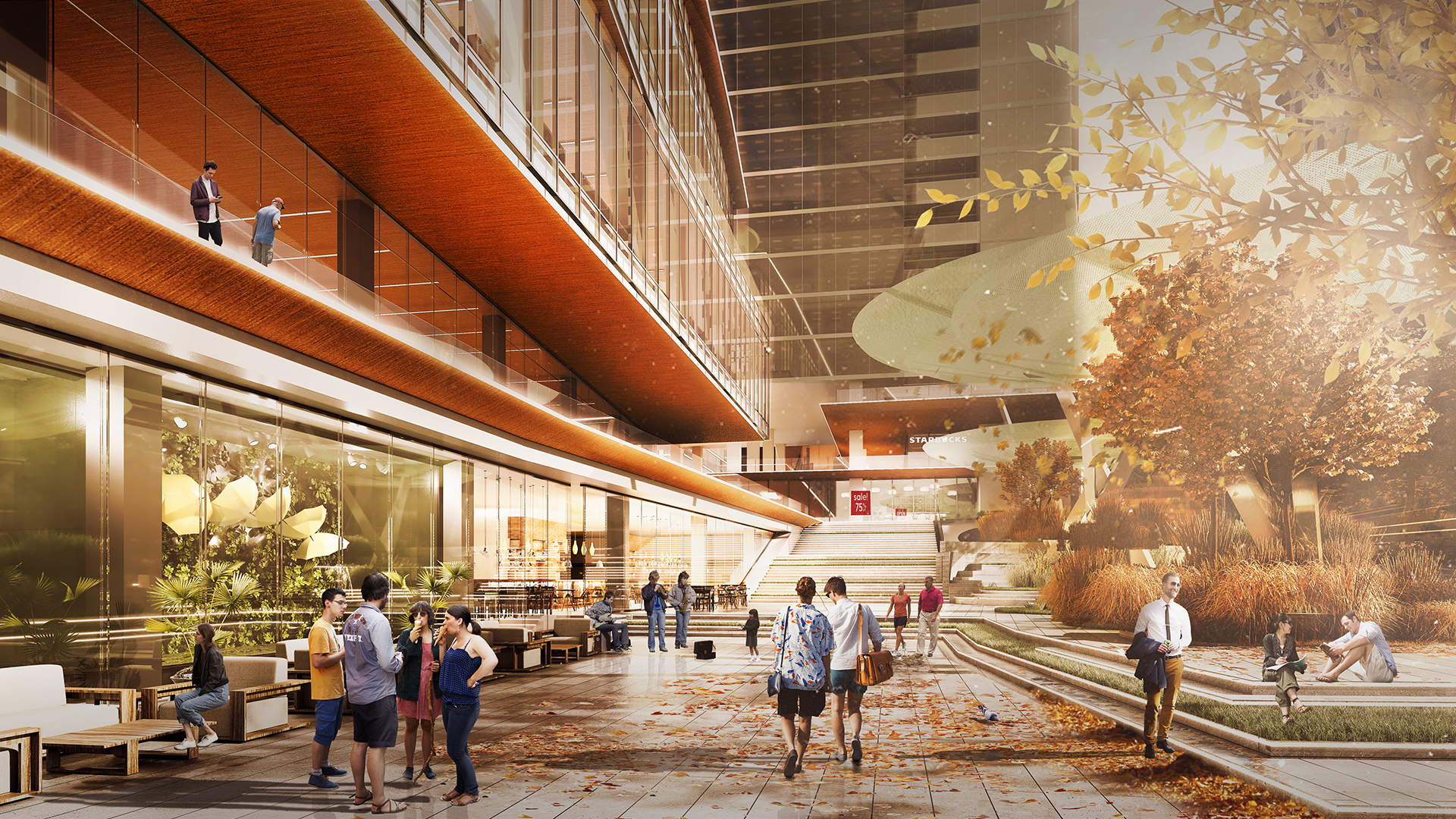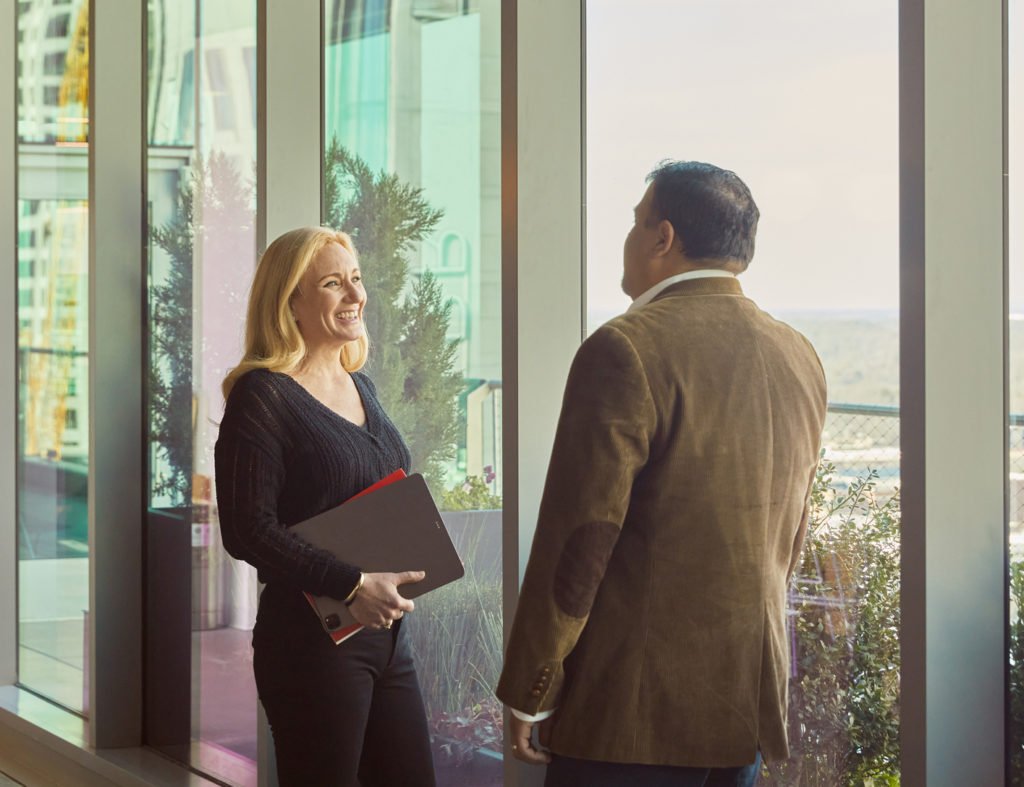Reimagining urban spaces to prioritize the human experience, foster social equity, and embrace sustainable design principles is of vital importance. By incorporating elements such as neighborhood-based planning, curated environments, vertical expressions of neighborhoods, programmatic elements, and considerations for human health and social equity, cities can be transformed into vibrant, inclusive, and engaging urban environments.
Cities are the heartbeat of human civilization, serving as centers of commerce, culture, and community. However, the traditional approach to urban development has often ignored the human experience, resulting in generic and disconnected environments . Such an approach argues for a paradigm shift in urban planning and design, emphasizing the importance of creating purposeful and beloved cities that prioritize the collective community’s well-being and satisfaction. By reimagining urban spaces, embracing social equity, and integrating sustainable design principles, cities can be transformed into dynamic and vibrant environments that resonate with the people who live, work, visit and play in them.
GREAT CITIES HAVE DISTINCT NEIGHBORHOODS
Neighborhood-based planning is fundamental to this argument. When we think of a city as a collection of neighborhoods, this approach offers several benefits.
To begin, it fosters a sense of identity and belonging, promotes local economic development and social cohesion, and encourages meaningful community engagement and participation. Creating distinct neighborhoods through design and community engagement involves incorporating local culture, history, and architectural elements, engaging residents in the planning and design process, and establishing neighborhood amenities and public spaces. This approach promotes local economic development, social cohesion, and equity by supporting local businesses and entrepreneurs, enhancing access to essential services and amenities, and addressing socioeconomic disparities—all those efforts that create a meaningful and vital community.
GREAT CITIES ARE CURATED EXPERIENCES
Great communities are in fact neighborhoods, carefully chosen and thoughtfully organized and presented in a meaningful way. In effect, great communities are “curated” environments that prioritize the human experience through beauty and delight and placemaking. Cultivating these experiences involves designing for walkability and human-scale environments that incorporate vibrant cultural amenities to welcome the public; places that have meaning and authenticity and are intimate to the community.
This pursuit of curated environments seems a simple quest, but it is only achieved by encouraging collaboration between various stakeholders for a truly purposeful development. Engaging urban planners, architects, developers, and communities in a collaborative process, balancing economic objectives with social and environmental considerations, and leveraging public-private partnerships are all critical components. Realizing a curated environment also entails incentivizing sustainable, resilient, and inclusive design by incorporating green building practices and sustainable technologies, designing for resilience and adaptation, and ensuring accessibility and inclusivity for all residents. These efforts are the building blocks of a beloved place.
GREAT CITIES BUILD FROM THE STREET TO THE SKY
Activated by the built experience, the curated city includes the spaces, places, and sense of belonging created. However, the opportunity before us with today’s cities is how we consider the vertical neighborhood, the city in the sky. Vertical office spaces, residential buildings, mixed-use towers should be intimately linked to the neighborhood they belong to by including design features that reflect the local community’s identity, particular culture, and history.
Historically, we see this reflection achieved in communities through the use of local materials and architectural styles that incorporate cultural motifs and symbolism. In the near future, designing the vertical city will take cues from the urban approach to community planning and integrate and create opportunities for social interaction and community engagement. There will be a thread of human experience in our cities that is all-encompassing from the street to the sky.
With intentionality and a broader consideration of programming within vertical buildings, vibrant experiences will be achieved by designing communal spaces and amenities within the building. This design approach will promote vertical neighborhoods and facilitate social events and activities for building occupants and the greater urban neighborhood, creating a singular immersive human experience.
GREAT CITIES HAVE A PULSE
Cities like Singapore and New York push the boundaries of being forever-relevant, with these places evolving through the course of a day, a week, a year. Programmatic elements become triggers to a meaningful and memorable experience, making a robust 24-hour city.
Incorporating the right elements within urban places can contribute to the development of a thriving city. By diversifying the functions and activities within a tower, these places then become active and engaging spaces throughout the day and night. Programmatic elements add vibrancy and vitality to the urban fabric, making the tower a destination for residents, workers, and visitors alike.
The additive nature of programmatic elements within the vertical tower enriches the 24-hour city experience. By incorporating diverse functions such as residential, commercial, recreational, and cultural spaces within the tower, it becomes a multi-functional hub that caters to the varied needs and preferences of the community. Adding an additional layer of programmatic experience—civic spaces, learning environments, museums, theaters—a diversity of destination-based programs ensures there is always something happening within the tower. These spaces provide opportunities for artistic expression, performances, exhibitions, and community events, creating a sense of belonging and shared experience.
GREAT CITIES FOSTER COMMUNITY WELL-BEING
A layer of shared community spaces within the tower, such as communal lounges, co-working areas, and event spaces, foster collaboration, interaction, and a sense of community. These spaces become gathering points where people can connect, exchange ideas, and build relationships. Additionally, incorporating health and wellness facilities within the tower promotes a healthy lifestyle and supports the well-being of residents, workers, and visitors. Fitness centers, yoga studios, and wellness clinics encourage physical activity, relaxation, and self-care, enhancing the overall quality of life.
In the context of the 24-hour city, it is essential to consider the connectivity and integration of the vertical tower within the larger urban environment. Seamless connectivity with surrounding neighborhoods, public transportation networks, and pedestrian-friendly infrastructure ensures accessibility and ease of movement. This integration allows for the flow of people and activities between the tower and its surroundings, enriching the overall urban experience.
Conclusion
In conclusion, including programmatic elements within the vertical tower contributes to the development of a thriving 24-hour city. By varying functions and activities, the tower becomes an engaging and dynamic space that caters to the needs and desires of the neighborhood. Shared community spaces, health and wellness facilities, and social and cultural amenities enhance the urban experience, promote human well-being, and foster a sense of community.
A seamless integration with the larger urban environment ensures connectivity and accessibility, enhancing the overall vibrancy of the 24-hour city and creating a city that is inclusive, active, and alive. Buildings and cities should be multi-dimensional in their blended programmatic exuberance, with an invitation to explore a greater sense of belonging characterized by a neighborhood that is active in both horizontal and vertical dimensions.
Learn more about the working world and how it is redefining its culture. Little’s recently published Beyond Workplace III book explores the possibilities, the realities, and even the impossible.

